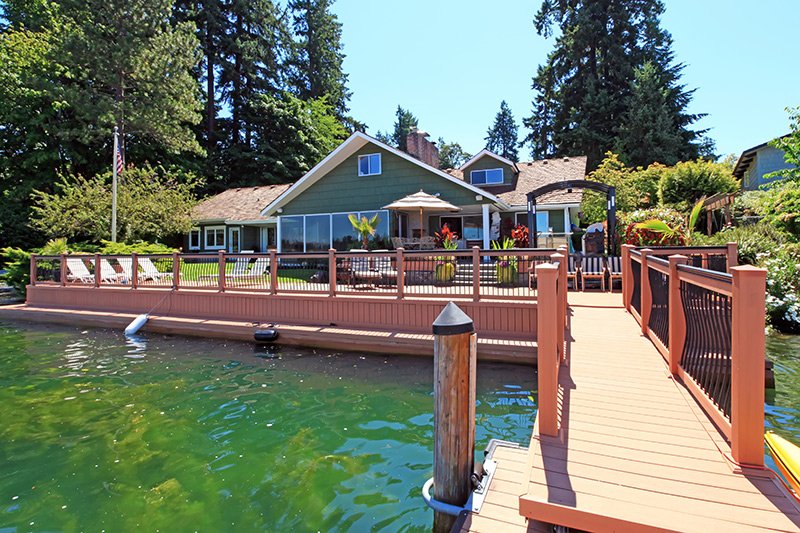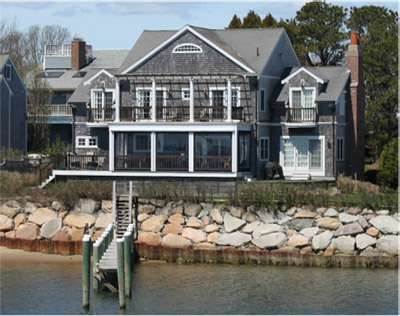
1. Contact at least three insurance agents to compare coverage. Your mortgage lender will require you to have homeowners insurance. You may be required to purchase additional insurance – like flood insurance. You aren’t required to buy from a particular insurance company. Instead, compare coverage, price and customer reviews. Be sure you get the right type and amount of coverage. Shop for value, not rock-bottom price. Since you'll mainly deal with insurance companies during times of disaster, make sure the company you choose has great customer service reviews.
2. Escrow your insurance payments with your mortgage payments. If you're like most homeowners, you’ll add the monthly insurance payments into your mortgage payment. The lender will pay your insurance premiums (usually your property taxes, too) out of your escrow account. Lenders prefer this option because it lets them know your insurance premiums are being paid, and their investment is protected. Most likely, you’ll need to pay for one year of insurance at closing.
3. Make sure you're getting adequate coverage. The most important part of homeowners insurance is the level of coverage. Avoid paying for more than you need.
Here are the most common levels of coverage:
HO-2 – Broad policy that protects against 16 perils that are named in the policy.
HO-3 – Broader policy that protects against all perils except those specifically excluded by the policy.
HO-5 – Premium policy that typically protects newer, well-maintained homes; it covers against all perils except those specifically excluded by the policy.
HO-6 – Insurance for co-ops/condominiums, which includes personal property coverage, liability coverage and coverage of improvements to the owner’s unit. Insurance for the actual structure usually comes through the association.
HO-7 – Similar to an HO-3 policy, but for mobile homes.
HO-8 – Policy specifically for older homes, with similar coverage to an HO-2 policy. However, it only covers actual cash value.
4. Understand your policy. It’s not enough to get the right policy level. Before you make a decision, understand these homeowners insurance terms:
Deductible – This refers to the amount you must pay out of pocket before your insurance kicks in; the higher the deductible, the lower the annual premium.
Liability Coverage – This is coverage that will pay medical or legal bills if someone is hurt on your property, usually due to negligence.
Personal Property – Sometimes called the contents of you home, this is tangible property such as furniture, electronics and clothing.
Premium – This is the price you pay for insurance, usually annually or monthly.
Replacement Cost – This is the kind of insurance that pays the full cost of replacing your dwelling or personal property, up to a maximum dollar amount. Most standard policies offer replacement cost, but you want to be sure the maximum amount is high enough.
Actual Cash Value – This type of policy gives you the current cash value (with depreciation) for personal property or your dwelling. It’s possible to have actual cash value dwelling coverage (as with an HO-8 policy), but to get replacement cost coverage for your contents.
Sub-Limits – Homeowners insurance policies will include limits, but they’ll typically also have sub-limits. For instance, the sub-limit on personal property for a $500,000 policy would typically be $250,000, or 50 percent of dwelling coverage.
Riders – These are policies you can include on your overall insurance policy to cover specific items. For instance, expensive antiques, jewelry and artworks are often covered under their own rider because they’re too valuable to be covered as regular personal property. Some HO-8 policyholders also may get additional riders for things like heating, ventilation and air-conditioning systems, which are part of the home and expensive to replace.
Be sure you understand how all of these terms work together in your homeowners insurance policy. Ask questions to ensure you have the right amount of coverage at the right price! For more information or for insurance quotes, contact Lallis & Higgins.
US News - Money





